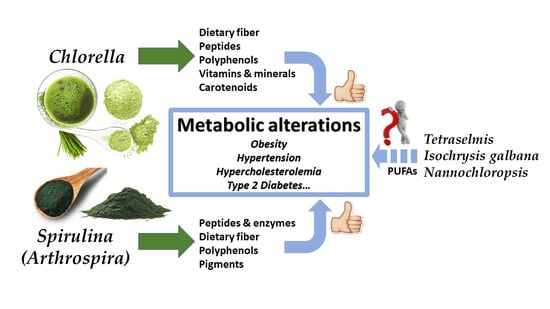Chlorella vs. Chlorophyll: Understanding the Differences and Benefits
Chlorophyll is the green pigment found in plants and algae, playing a crucial role in photosynthesis by capturing light energy. It is known for its antioxidant properties and may offer health benefits such as supporting cell health and providing potential detoxification support. Chlorophyll is often extracted from plants and algae for use in dietary supplements, functional foods, and healthcare products.
It is essential to comprehend the distinctions between chlorella and chlorophyll to make informed decisions about their potential uses and health benefits. By exploring their unique nutritional composition, sources, health benefits, and uses, individuals can better understand how these natural substances can contribute to their overall well-being. This blog aims to provide detailed insights into the differences and benefits of chlorella and chlorophyll, empowering readers to incorporate these natural elements into their health and wellness routines with confidence.
Chlorella is a genus of single-celled, green freshwater algae that has gained significant attention for its potential health benefits. It is a photosynthetic microorganism that contains a high concentration of chlorophyll, which gives it its characteristic green color. Chlorella has a unique cell wall structure that requires special processing to enhance its digestibility, as its tough cell wall is indigestible to humans in its natural form.
What is Chlorella?
Chlorella isa single-celled, green microalga that grows in freshwater. It's known for its nutritional value and potential health benefits, often used as a dietary supplement. It's a good source of protein, vitamins (including B12), and minerals, and contains compounds like beta-glucan and antioxidants . Chlorella is also being studied for its potential role in various health conditions and even as a biofuel source.

Nutritional Benefits
Chlorella is renowned for its exceptional nutritional profile, making it a popular choice for those seeking plant-based sources of essential nutrients. It is a rich source of complete protein, containing all nine essential amino acids necessary for human health. Additionally, chlorella is an abundant source of vitamins, including vitamin C, vitamin B12, and beta-carotene, as well as minerals such as iron, magnesium, and zinc. Furthermore, it provides essential fatty acids, fiber, and nucleic acids, contributing to its overall nutritional value.
Due to its broad range of nutrients, chlorella is often considered a superfood and is frequently used to complement vegetarian and vegan diets, providing essential nutrients that may be lacking in plant-based diets.
Health Benefits
Research suggests chlorella may have antioxidant , immunomodulatory , and other pharmacological activities . Some studies indicate it may help with cardiovascular health by lowering cholesterol and blood pressure. It's also been investigated for its potential to improve gut health and reduce symptoms like bloating and constipation.
As ongoing research continues to explore the potential health benefits of chlorella, it remains a subject of interest in the fields of nutrition, alternative medicine, and dietary supplementation. Its diverse nutritional content and potential impact on health make it an intriguing natural supplement for individuals seeking to optimize their nutritional intake and promote overall wellness.

Chlorella Benefits For Skin
Chlorella benefits the skin by helping it modulate the gut microbiome. It can also increase the production of anti-inflammatory short-chain fatty acids like propionate.
Consider this supplement if you have sensitive or acne-prone skin and often experience bloating, gas, or cramps. Take note: a healthy gut leads to healthy skin.
Chlorella’s benefits for the skin go beyond anti-aging, anti-inflammatory, and hydration. It’s also high in antioxidants (e.g., chlorophyll and nucleic acids) which can help protect your skin cells from free radical damage.
Adding chlorella into your skincare routine regularly can help promote muscle function, prevent dark spots, and reduce signs of aging.

What is Chlorophyll?
Chlorophyll is a pigment found in plants. It makes plants look green and is almost identified with green plants. Green plants are very beneficial for human health and thanks to the chlorophyll pigment together with the vitamins and minerals contained in these plants, it creates miraculous effects on the human body.

What are the Benefits of Chlorophyll?
Chlorophyll is present in all leafy plants. Some vegetables such as spinach, parsley and green beans contain particularly high levels. Applying chlorophyll to the skin contributes to reducing the effects of aging.
Additionally, some research suggests that chlorophyll may support gastrointestinal health by aiding in the maintenance of a healthy digestive system and promoting the growth of beneficial gut bacteria. Moreover, chlorophyll's potential anti-inflammatory properties have been investigated for their role in supporting overall immune function and reducing inflammation within the body.
As ongoing research sheds light on the potential health-promoting properties of chlorophyll, its incorporation into a balanced and varied diet may offer individuals an array of potential health benefits. From supporting detoxification and antioxidant defenses to promoting digestive health and overall well-being, chlorophyll remains an intriguing natural compound with implications for health and nutrition.

Where is Chlorophyll Found?
Chlorophyll is primarily found in green, leafy vegetables such as Alfalfa, mulberry leaves, spinach, kale, parsley, and broccoli. Additionally, green algae and other green plants contain significant amounts of chlorophyll. Consuming a varied diet rich in green vegetables and plant-based foods offers an excellent source of dietary chlorophyll. In recent years, chlorophyll supplements in the form of liquid, capsules, or powders have also become available, providing an alternative means of incorporating chlorophyll into one's diet.
This pigment is present in all green plants. However, if you want to benefit from the unique effects of chlorophyll, you need to include more of the following vegetables in your usual diet. You can squeeze the juice from green vegetables and make chlorophyll juice that you can drink quickly.
Key Differences between Chlorella and Chlorophyll
Biological Origin and Structure
Chlorella is a single-celled freshwater green algae that contains a unique combination of nutrients and compounds, making it a popular dietary supplement. Its structure consists of a spherical shape with a distinct cell wall, which can vary in thickness depending on the species. This cell wall is a notable feature, as it distinguishes chlorella from other forms of algae and impacts its potential uses and benefits.
Chlorophyll, on the other hand, is a pigment present in the chloroplasts of plants and algae, as previously discussed. It is responsible for the green coloration of plants and serves a vital role in the process of photosynthesis. Chlorophyll has a complex molecular structure, featuring a porphyrin ring with a magnesium ion at its center. This structure enables chlorophyll to absorb light energy and transfer it into chemical energy during photosynthesis.
:max_bytes(150000):strip_icc()/GettyImages-1396359028-c08aaa92214641398fbc0912b515bcef.jpg)
Nutritional Content and Uses
Chlorella is renowned for its rich nutritional profile, containing essential vitamins, minerals, and amino acids. It is particularly valued for its high protein content, making it a popular supplement for vegetarians and vegans seeking alternative sources of protein. Chlorella also contains significant amounts of chlorophyll, which contributes to its vibrant green color and potential health benefits. This nutritional powerhouse is frequently incorporated into supplements, powders, and health products, providing a convenient means of incorporating its nutrient-rich properties into one's diet.
Chlorophyll, on the other hand, is primarily valued for its role as a natural pigment and its potential health benefits. While it is found in green, leafy vegetables and some algae, chlorophyll supplements offer a concentrated source of this beneficial compound. Its uses extend to promoting detoxification, providing antioxidant support, and potentially aiding in digestion and immune function due to its unique properties.
Health Benefits and Applications
Chlorella and chlorophyll offer distinct health benefits and applications, stemming from their unique compositions and biological functions.
Chlorella boasts a range of potential health benefits, including support for detoxification, immune function, and overall well-being. Its high protein content, essential nutrients, and chlorophyll make it popular for promoting energy, and vitality, and supporting the body's natural detoxification processes. Additionally, chlorella's potential to support healthy cholesterol levels, digestive health, and antioxidant defenses further adds to its appeal as a dietary supplement.
Chlorophyll, with its focus on photosynthesis and its potential health-promoting properties, is associated with supporting detoxification, antioxidant activity, and gastrointestinal health. Its ability to bind to and help eliminate toxins, neutralize free radicals, and potentially support digestive health makes it a valuable addition to one's nutritional regimen.
Understanding the differences and benefits of chlorella and chlorophyll can guide individuals in making informed decisions about their nutritional and supplemental needs, ultimately contributing to a greater understanding of the natural compounds that support health and well-being.

Conclusion
In summary, chlorella and chlorophyll are two distinct yet complementary substances with unique nutritional profiles and health benefits. Chlorella, a nutrient-dense freshwater algae, is rich in essential nutrients such as protein, vitamins, and minerals, providing comprehensive nutritional support. It may aid in supporting immune function, promoting detoxification, and enhancing overall wellness due to its diverse array of nutrients.
Chlorophyll, the green pigment found in plants, boasts potent antioxidant properties and potential detoxification support, contributing to cellular health and combating oxidative stress. Additionally, chlorophyll's ability to promote alkalinity and support gastrointestinal health further underscores its beneficial properties.
While chlorella and chlorophyll share some common attributes, such as their chlorophyll content and potential detoxification support, they offer distinct benefits that make them valuable additions to a balanced diet and wellness regimen.
You can purchase Chlorophyll Powder at yanggebiotech.com The company is an industry-leading manufacturer and distributor for pure dietary supplements. YANGGE BIOTECH INGREDIENTS is not just a consumer brand. It also supplies pure ingredients to other brands that distribute food and other supplement products. Contact yanggebiotech.com to place an order today.


